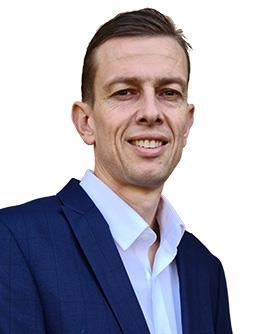09 July 2021

Jaco du Toit, Head of Sales for Mobile Networks SAV at Nokia
While the pandemic is far from over in most countries, the effects of COVID-19 have rocked countries and industries, serving as a catalyst to accelerated digitalisation, and creating new operating models across verticals. As enterprises and industries embrace this new way of doing business, traditional operating models continue to evolve into what has been deemed the new normal.
The Fourth Industrial Revolution (4IR) is also no longer a dream – as organisations digitalise in all shapes and forms. It has become a reality overnight, forcing CSPs to re-evaluate their operating models to support the increased demand driven by a sharp growth in demand for reliable connectivity to enable video conferencing, remote working capabilities, and access to remote education and telemedicine.
Enter the 5G era
5G adoption in Southern Africa is gaining momentum, with first deployments across the region taking place. These are following closely behind the Middle East, Europe, the United States, and the Far East. The ecosystem of devices is beginning to mature, but as the availability of spectrum is still relatively slow, CSPs are being convinced to enter into roaming agreements and partnerships with those who already have access to spectrum. In South Africa, for example, the release and subsequent extension of temporary radio frequency spectrum licenses during the pandemic has already yielded great results, showing the benefit that the availability of spectrum brings to markets and economies in the region. Once spectrum becomes more universally available, we expect to see large-scale 5G rollouts across the region, which in turn will drive the benefits of mobile broadband and the Internet of Things (IoT). One of the immediate use cases would be fixed wireless access (FWA) as an alternative to fibre, to connect under-developed area.
Industries such as online retail, media and banking have already evolved to embrace digitalisation, but physical industries such as manufacturing, healthcare, transportation, logistics, mining, and utilities have lagged.
The current information and communications technology (ICT) investment ratio between digital and physical industries is 70:30, despite the proportion of their respective GDP contributions being 30:70. Nokia Bell Labs Consulting believes that this provides an opportunity for a big inversion that will see physical industries invest in a broad ecosystem of technologies that they collectively term “5G+”. 5G+ brings together the foundational 5G network, along with key technologies that will digitalise every part of a company’s operations, including cloud infrastructure, augmented intelligence/machine learning (AI/ ML), enterprise private networks, and advanced sensors and robotics. With physical industry poised for growth in ICT investment, Nokia Bell Labs Consulting projects that investment enabled by these 5G+ technologies will grow to $4.5 trillion globally in 2030. Additionally, the historical 30:70 spend ratio between physical and digital industries will invert to 65:35 in favour of physical industry spend. This will, in turn lead to increased wages, profits and tax revenues, increasing global GDP by up to $8 trillion, something which is sorely needed in the wake of the COVID-19 pandemic.
Digital skills for a digital Southern Africa
This shift to digitalisation will require that new skillsets are developed on the continent. Forge Academy, launched at the end of 2020, powered by Nokia in partnership with Business Finland, EduExcellence and the United Nations, was established to provide students and entrepreneurs access to an incubator that has industry relevant accredited courseware, hardware and platforms along with hands on experiences that will position them for current Artificial Intelligence, Augmented Reality, Virtual Reality and digital media opportunities so they can shape opportunities for themselves in this new Fourth Industrial Revolution (4IR) economy. The objective of the academy is to develop skill sets within the next generation of engineers, technologists, entrepreneurs, and job titles that will still be created in years to come to prepare South Africans to take up their right place in the local economy. Another objective is to bridge the existing mismatch between youth skills and employer needs, enabling them to adapt to Industry 4.0.
Moving beyond 5G While 5G
is only beginning to gain momentum in the region, Nokia is already actively working towards 6G. As the overall lead in the European-driven Hexa-X project, Nokia has joined forces with other global forces to lay the foundation for the next generation of network architecture and technology, with the goal of shaping standardisation to meet future technology requirements. Hexa-X is a 2.5-year project within the EU’s Horizon 2020 ICT-52 programme and consists of 25 key players from adjacent industries and academia which will frame the 6G research agenda and lay the groundwork for long-term European investment in future wireless network technology.
It is expected that by 2030, 5G will have transformed society through the many new and impactful applications and services it enables in the dimension of enhanced mobile broadband (eMBB). Additionally, mission critical and massive machine connectivity will be a reality, which means that it would be time to go beyond what 5G can offer and look to new technologies with new capabilities. That means that now is the time to start exploring the elements and challenges around 6G in preparation for its introduction to the market. Trustworthiness, sustainable development, and digital inclusion will remain key priorities in the 6G era and will be the foundational principles around which future networks will be defined and implemented. Artificial Intelligence (AI) and Machine Learning (ML) should be used to optimise networks, enable new services, and ultimately make our lives better, delivering immersive communication and cyber-physical systems that are versatile and flexible to meet our future needs.







